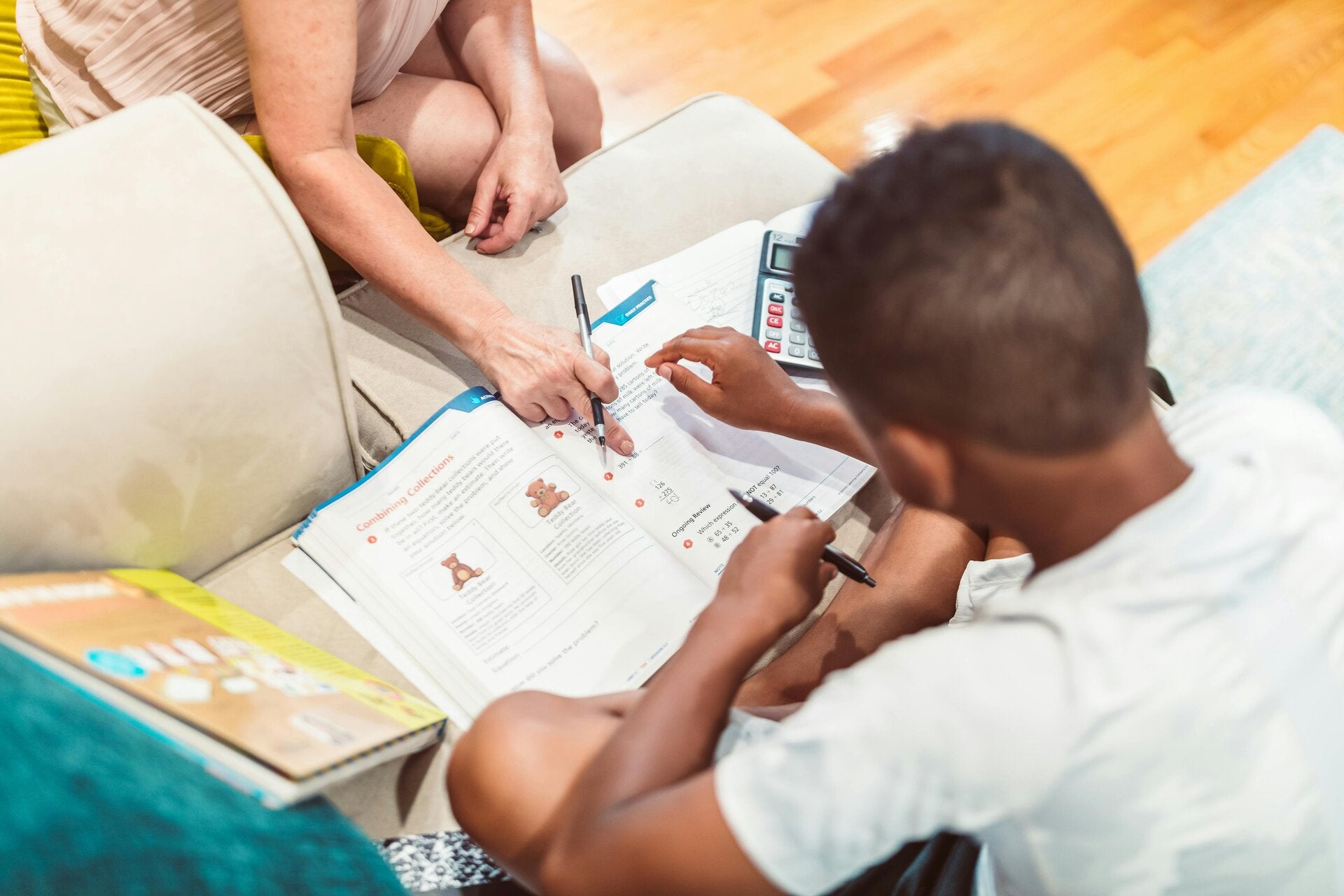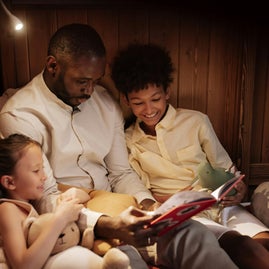Language development means learning how to understand and use words.

Understanding Language Development
Language development involves both receptive (listening and understanding) and expressive (speaking and producing language) skills. From cooing and babbling in infancy to forming complex sentences in early childhood, children move through distinct developmental stages.
According to theorist Lev Vygotsky, language development is deeply embedded in social interaction. Vygotsky emphasized the role of caregivers and the environment in shaping language learning, introducing the concept of the Zone of Proximal Development (ZPD) – the difference between what a child can do independently and what they can achieve with support. This theory underlines the importance of scaffolding by adults through meaningful dialogue, prompting, and shared activities.
According to Vygotsky (1978), language is shaped through social interaction and learning within the Zone of Proximal Development (ZPD). Piaget (1959) proposed that cognitive readiness influences language acquisition, and modern interactionist views blend these perspectives (Tomasello, 2003; Whitebread, 2019).
Jean Piaget, on the other hand, viewed language as part of a child's broader cognitive development. He proposed that children construct knowledge through interactions with their environment, suggesting that cognitive development precedes language. However, modern interactionist perspectives bridge these views, asserting that both social interactions and cognitive readiness are critical for language acquisition.
The stages of language development typically include:
- Pre-linguistic stage (0-12 months): Cooing, babbling, responding to sounds.
- Single-word stage (12-18 months): Use of first words, naming familiar people and objects.
- Two-word stage (18-24 months): Simple combinations like "more milk."
- Early multiword stage (2-3 years): Short sentences, growing vocabulary.
- Later multiword stage (3-5 years): Use of grammar, storytelling, question asking.
These stages are fluid and influenced by the child’s individual pace, experiences, and context.

The Importance of Speaking and Listening
Speaking and listening form the foundation for literacy, learning, and social-emotional growth. Oral language skills are strongly linked to later reading and academic success. Children who are proficient in speaking and listening are better equipped to follow instructions, express their needs and feelings, and engage in complex thought processes.
Research shows that children with strong oral language skills are more likely to develop effective reading and writing abilities.
Good oral language supports academic success and social-emotional growth (National Literacy Trust, 2020). Bronfenbrenner’s ecological systems theory explains that a rich home environment is crucial in shaping language exposure and learning (Bronfenbrenner, 1979). Listening enables children to process sounds, words, and meaning, while speaking allows them to express their understanding, ask questions, and make connections.
Bronfenbrenner’s ecological systems theory provides a useful framework for understanding how various environmental factors impact language development. The microsystem (e.g., home, family) plays a central role, as the child's immediate relationships influence their daily communication experiences. The mesosystem (e.g., interactions between home and early learning centres), exosystem (e.g., parent’s workplace policies), and macrosystem (e.g., cultural beliefs and values) all contribute to shaping a child’s language exposure and opportunities.
The Role of Adult-Child Interaction
One of the most significant predictors of language development is the quality and quantity of adult-child interactions. Children learn language best through responsive and interactive experiences with adults. This includes talking, listening, reading, singing, and playing. Vygotsky emphasized using adult scaffolding—through expanded language and responsive communication—to push children through their ZPD (Vygotsky, 1978). This bolsters vocabulary, comprehension, and conversational skills (Whitebread, 2019).
Key adult behaviours that support language development include:
- Using rich and varied vocabulary: Exposing children to new words and concepts.
- Responding to children’s cues: Following the child’s lead and showing interest.
- Asking open-ended questions: Encouraging thinking and conversation.
- Expanding on children’s speech: Repeating and adding more information to what the child says.
- Reading together: Sharing stories builds vocabulary, comprehension, and imagination.
These interactions create a nurturing communication environment, which fosters trust and curiosity. Vygotsky’s emphasis on dialogic learning highlights the importance of these interactions in scaffolding children’s understanding and helping them progress through the ZPD.




Videos related to the stages of growth of children
Everyday Conversations Make a Big Difference
-
Use lots of words during play and routines
-
Ask open-ended questions (e.g., “What did you like about the park?”)
-
Listen to your child and show you care1. These moments help your child feel heard and help their brain grow.
-
Read books aloud and talk about the pictures
-
Add new words to what your child says
-
Child: “Dog bark!”
-
You: “Yes! The big brown dog is barking loudly!”
-

Culturally and Linguistically Responsive Pedagogies
Culturally and Linguistically Responsive Pedagogies
Australia is a culturally diverse country, and many children grow up in homes where English is not the primary language. It is essential to recognize the value of home languages in supporting children's overall language development.
Culturally and linguistically responsive pedagogies respect and celebrate this diversity. They encourage families to continue speaking their home language while also supporting the child’s development of English. Supporting home languages helps strengthen overall language development and cognitive flexibility (Department of Education, 2022,Tomasello, 2003).Research indicates that strong skills in the first language facilitate learning a second language and contribute to cognitive flexibility.
Practical ways to support bilingual children include:
- Reading books in both home language and English.
- Encouraging storytelling and conversation in the home language.
- Affirming the child’s identity through cultural practices.
- Partnering with early childhood educators to create supportive learning environments.
This approach aligns with the Early Years Learning Framework (EYLF) and ensures that all children, regardless of linguistic background, have equitable access to communication-rich experiences.
Tips for Families

Read books in both languages

Use family stories and songs

Teach your child to be proud of their heritage

Work with educators to support language learning
Creating A Language-Rich Home Environment
The home environment is the first and most influential context for language learning. Families can create language-rich environments by incorporating communication into daily routines and play. Whitebread (2019) stresses the importance of responsive relationships, routines, reading, and play in early language development.
Characteristics of effective home learning environments include:
- Warm, responsive relationships: Children feel safe and valued.
- Shared activities: Reading, singing, storytelling, and games.
- Daily routines as learning opportunities: Talking about what you're doing during meals, bath time, and shopping.
- Access to books and literacy materials: A variety of age-appropriate books, songs, and storytelling props.
- Limit screen time: Promote face-to-face communication.
Multimodal learning tools such as picture books, puppets, songs, and videos can enhance language experiences. These tools engage multiple senses and help children connect words with actions, emotions, and concepts.

Resources links to bilingual children’s books
Make Your Home a Language-Rich Place
Your home is the best place for your child to learn to talk and listen. You don’t need special toys or lessons—just love, time, and talk.
Do this every day at your home and then see what helps!
-
📚 Read together (even 10 minutes is great!)
-
🎶 Sing songs and rhymes
-
🍽️ Talk during meals and routines
-
🧩 Play games that use words
-
🗨️ Name objects, describe actions, and tell stories
-
A quiet space for reading
-
Books your child can touch and enjoy
-
Encouragement and praise for talking
-
Making eye contact and showing interest


The Role of Families in Language Development
Families are children’s first teachers. When families are empowered with knowledge and tools, they can create powerful learning experiences. Partnerships between families and educators are also key to consistent and effective support. Vygotsky (1978) and Bronfenbrenner (1979) highlight that family is the primary context where language and identity develop.
Parents can:
- Model good communication by actively listening.
- Celebrate their child’s language efforts.
- Use everyday experiences as learning moments.
- Encourage questions and curiosity.
Supportive policies and practices in early childhood settings should involve families in decision-making and provide multilingual resources. Early childhood professionals should also be trained in cultural competence and inclusive communication strategies.
Conclusion
Language development is a complex but vital aspect of early childhood. Speaking and listening are more than just communication skills – they are the building blocks of literacy, learning, and wellbeing. Theories by Vygotsky, Piaget, and Bronfenbrenner remind us that language is shaped by interactions, environments, and cultural contexts. Families play a central role in fostering these skills through warm, engaging, and responsive relationships.
By creating supportive, inclusive, and language-rich environments at home, families lay the foundation for their children’s lifelong learning and success. This website serves as a practical and accessible resource to guide families in nurturing their children’s early language development in everyday ways.

Parent Support and Resources
Our parent support and resources are here to help you navigate the language learning journey with your child. From tips on creating a language-rich environment at home to guidance on supporting your child's language development, we're here to support you every step of the way.
Parent support and resources are created in collaboration with child development specialists for optimal support.
- Guidance on creating a language-rich environment
- Support for your child's language development
- Tips and resources for parents



